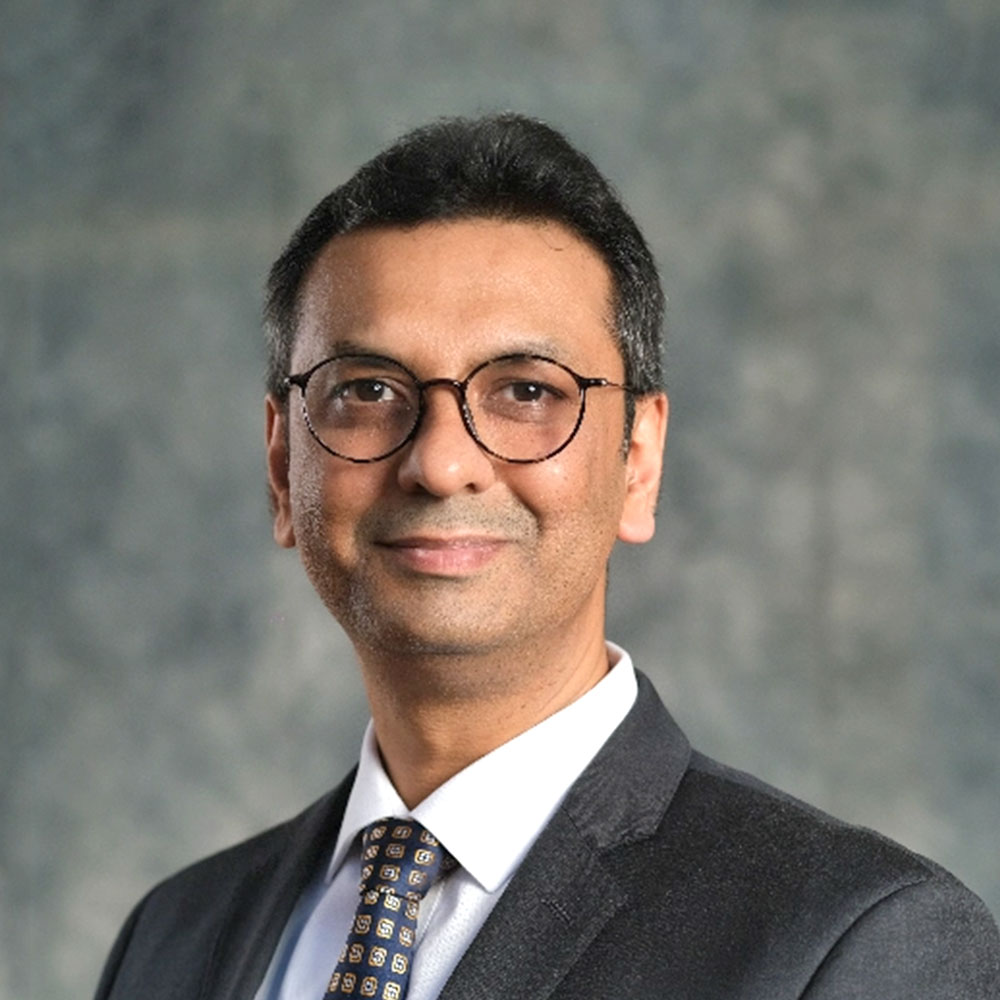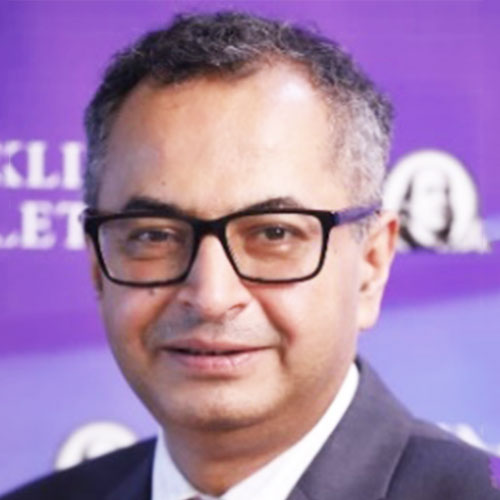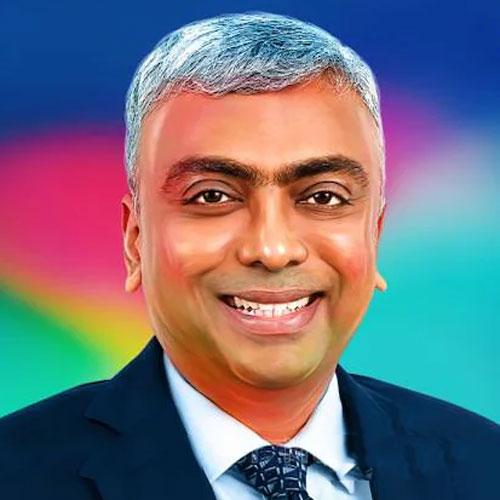Mr. Nimesh Chandan
Chief Investment Officer - Fixed Income India
Bajaj Finserv
Nimesh Chandan is an Investment Professional with 22 years of experience in investing in the Indian capital markets. He has an established track record in managing money and advising clients, both Domestic and International, Retail as well as Institutional.
Over the years, he has developed an investment process that generates alpha through informational, analytical as well as behavioural edge. He has been part of the mutual fund industry for 18 years where has managed products across market capitalisation and themes, and developed models on Sustainable Investing, Quant Investing and Asset Allocation..
Nimesh is a keen follower of Behavioural Finance and has been writing and presenting on the role of psychology in Investment Decision-making to the investment community. He has developed a set of processes and tools that help reduce one’s behavioural mistakes and understand the crowd or market behaviour.
Q1. A major event in the US is the potential return of Trump with "Trump 2.0." How do you think this could influence US monetary policy, and what impact might it have on interest rates globally?
The potential return of Trump with "Trump 2.0" could bring significant policy shifts, impacting global markets and monetary policy indirectly. His administration's platform of improving government efficiency and reducing budgetary expenditure could influence fiscal policy, possibly curbing certain government programs to manage deficits. However, pro-business policies, including deregulation and tax incentives, might stimulate economic growth, potentially leading to inflationary pressures that the US Federal Reserve would need to monitor closely.
Key uncertainties, such as tariffs, visa policies, and inflation, add layers of complexity. Trade restrictions or tariff uncertainty could disrupt global supply chains, increasing costs and fueling inflation, while visa policy changes might impact labor markets and productivity. These factors could lead the Federal Reserve to adopt a cautious stance, balancing growth support with inflation control. For now, a "wait and watch" approach is prudent as the situation evolves, keeping a close eye on data and developments that could shape interest rates globally.
Q2. In 2024, the US Federal Reserve reduced interest rates by 100 basis points, yet the US 10-year bond yields have risen by about 70-80 basis points. Meanwhile, despite the Reserve Bank of India not cutting rates, the 10-year G-Sec yield posted its steepest decline in four years in 2024. The yield ended at 6.7597%, dropping 42 basis points on-year after easing 15 bps in 2023. How do you interpret these developments in the context of both economies?
Some of the reasons for rising US 10 year bond yields are:
-
Economists initially projected 1.2% growth for 2024, but this estimate more than doubled to 2.7% by year-end. Stronger-than-expected growth reduced the likelihood of further Federal Reserve rate cuts, pushing yields higher.
-
Economic uncertainty continues to drive yields upward, with lingering questions about the Fed's future rate path and the potential inflationary impact of new administration policies.
-
If markets anticipate higher future inflation, long-term bond yields may rise, regardless of rate cuts.
Some of the factors attributing to falling 10 year G-Sec yields are:
-
Easing Inflation: India's retail inflation moderated significantly in 2024, reducing pressure on yields.
-
Global Impact: Falling US Treasury yields earlier in the year and expectations of global monetary easing improved risk sentiment, benefiting Indian bonds.
-
Foreign Inflows: Improved global liquidity conditions likely attracted Foreign Portfolio Investors (FPIs) to Indian debt markets, strengthening demand for G-Secs.
-
Supply Management by RBI: Proactive Open Market Operations (OMOs) and bond-buying programs by the RBI ensured smooth absorption of government borrowing, keeping yields under control.
Q3. What are the key risks that fixed income investors should be mindful of?
-
Interest Rate Risk: When interest rates rise, the price of existing bonds tends to fall, leading to potential capital losses. This is a key risk for investors holding longer-duration bonds. Short-duration bond funds or those focused on floating-rate securities can help mitigate this risk.
-
Credit Risk: This refers to the risk that the issuer of the bond may default on its interest payments or principal repayment. For investors in corporate bonds or lower-rated bonds, it's essential to assess the creditworthiness of the issuer. Opting for funds focused on high-quality, investment-grade bonds can reduce exposure to credit risk.
-
Inflation Risk: Inflation erodes the purchasing power of fixed income returns. If inflation rises significantly, the real return on fixed income securities may turn negative. Investors looking for protection against inflation may consider inflation-linked bonds or funds with exposure to sectors that tend to perform well in inflationary environments, such as government securities or short-duration bonds.
-
Liquidity Risk: Some fixed income securities, particularly those in less liquid markets, can be difficult to sell quickly without a loss in value. This risk is more relevant for investors in lower-rated or illiquid bonds. Funds that focus on more liquid, high-quality bonds can help mitigate this risk.
-
Reinvestment Risk: This arises when interest or principal payments from bonds need to be reinvested, but prevailing interest rates are lower than when the original investment was made. Investors can mitigate this by opting for laddered bond strategies or funds that actively manage reinvestment opportunities.
Q4. What investment strategies would you recommend for investors at both the short end and long end of the curve in 2025?
Investment strategies for 2025 should consider the prevailing macroeconomic environment, interest rate trends, and individual investor objectives. At the short end of the curve, the focus is typically on managing liquidity and capital preservation. Investors may look to take advantage of opportunities that offer stable returns with lower interest rate sensitivity, keeping duration relatively short to mitigate volatility risks. This approach is particularly suited for those with a shorter investment horizon or those seeking to park funds temporarily.
For the long end of the curve, strategies would likely depend on the trajectory of interest rates and inflation expectations. A stable or declining rate environment could provide opportunities to lock in higher yields for the long term, benefiting from potential price appreciation. However, long-duration investments carry higher interest rate risks and may be better suited for investors with a longer horizon and a greater tolerance for volatility. Across both ends, diversification and alignment with individual financial goals remain key to navigating market uncertainties effectively.
Q5. With the RBI raising its inflation projection and lowering its GDP growth forecast for the current fiscal year, what is your outlook on economic growth? Do you believe it can pick up in the second half of this fiscal year?
The RBI's decision to raise its inflation projection and lower its GDP growth forecast reflects the challenges posed by persistent inflationary pressures and global uncertainties. These adjustments suggest a cautious economic environment where growth might face headwinds in the near term due to higher costs, subdued external demand, and tighter monetary conditions.
That said, economic growth in the second half of the fiscal year could pick up, supported by factors like a good festive season, strong government spending, and resilient domestic demand. Additionally, easing inflationary pressures, if achieved, could improve consumer and business sentiment, fostering a recovery in key sectors. However, much will depend on external factors like global growth trends, geopolitical developments, and commodity price movements. A balanced and measured approach remains crucial for navigating these evolving conditions.






